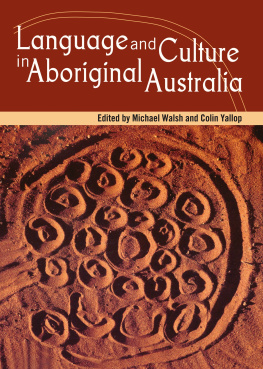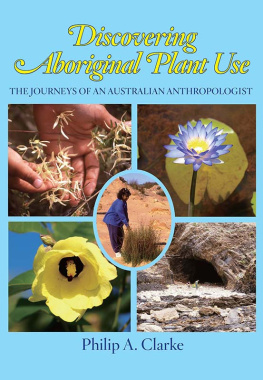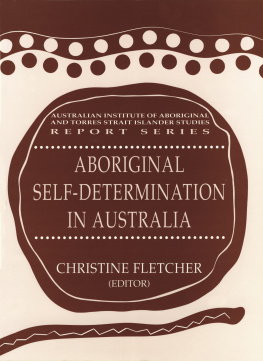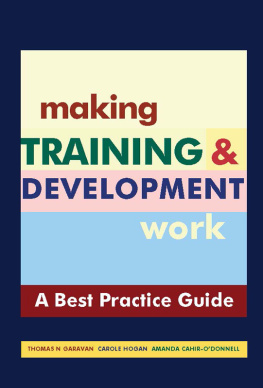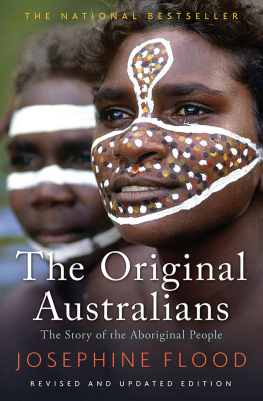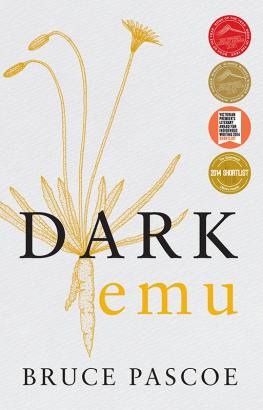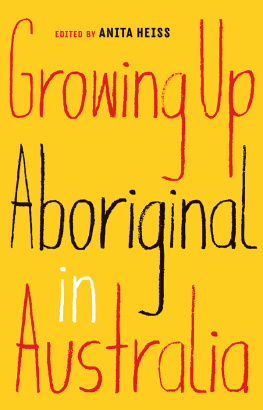Aboriginal Biocultural
Knowledge in
South-eastern Australia
PERSPECTIVES OF EARLY COLONISTS
FRED CAHIR, IAN D. CLARK AND PHILIP A. CLARKE
Dedication
This publication is in honour of the Indigenous Elders past, present and future who have been and are custodians of south-eastern Australia.
I should remark that when Tung.bor.roong spoke of Borembeep [Burrumbeep, south of Ararat] and the other localities of his own nativity he always added, Thats my country belonging to me!! Thats my country belonging to me!! (GA Robinson Journal, 17 July 1841).
Fred Cahir, Ian D. Clark and Philip A. Clarke 2018
All rights reserved. Except under the conditions described in the Australian Copyright Act 1968 and subsequent amendments, no part of this publication may be reproduced, stored in a retrieval system or transmitted in any form or by any means, electronic, mechanical, photocopying, recording, duplicating or otherwise, without the prior permission of the copyright owner. Contact CSIRO Publishing for all permission requests.
The moral rights of the author(s) have been asserted.
A catalogue record for this book is available from the National Library of Australia.
Published by
CSIRO Publishing
Locked Bag 10
Clayton South VIC 3169
Australia
Telephone: +61 3 9545 8400
Email:
Website: www.publish.csiro.au
Front cover: (top) Native encampment at Portland Bay by George French Angas, 1844. South Australian Museum Archive. (middle) Water vessels (tarnuks) from Smyth RB (1878) The Aborigines of Victoria. Victorian Government Printer, Melbourne. (bottom) Cockle shell midden on the northern Younghusband Peninsula in 1990 (photograph: Philip Clarke).
Back cover: Bark canoe from Smyth RB (1878) The Aborigines of Victoria. Victorian Government Printer, Melbourne.
Set in 9.5/13.5 Adobe Garamond Pro
Edited by Anne Findlay, Princes Hill, Melbourne, Victoria
Cover design by Andrew Weatherill
Typeset by Desktop Concepts Pty Ltd, Melbourne
Index by Indexicana
Printed in Singapore by C.O.S. Printers Pte Ltd
CSIRO Publishing publishes and distributes scientific, technical and health science books, magazines and journals from Australia to a worldwide audience and conducts these activities autonomously from the research activities of the Commonwealth Scientific and Industrial Research Organisation (CSIRO). The views expressed in this publication are those of the author(s) and do not necessarily represent those of, and should not be attributed to, the publisher or CSIRO. The copyright owner shall not be liable for technical or other errors or omissions contained herein. The reader/user accepts all risks and responsibility for losses, damages, costs and other consequences resulting directly or indirectly from using this information.
Acknowledgement
CSIRO acknowledges the Traditional Owners of the lands that we live and work on across Australia and pays its respect to Elders past and present. CSIRO recognises that Aboriginal and Torres Strait Islander peoples have made and will continue to make extraordinary contributions to all aspects of Australian life including culture, economy and science.
Original print edition:
The paper this book is printed on is in accordance with the rules of the Forest Stewardship Council. The FSC promotes environmentally responsible, socially beneficial and economically viable management of the worlds forests.
Foreword
Global warming, changed weather patterns, degradation of the environment, species extinction and unconstrained growth in human population have become the hallmarks of our time. The non-Indigenous peoples who now occupy south-eastern Australia have changed the biosphere in significant ways since first arriving in the 1830s. The introduction of sheep and cattle, as well as other animal and plant species used to acclimatise colonial settlers to their new world, changed the landscapes of south-eastern Australia forever. Aboriginal Biocultural Knowledge in South-eastern Australia provides an important and timely addition to contemporary Australian discussions concerning the relationship between the biosphere and the human societies that are sustained by them.
Melbourne was conceived to mirror London in both attitude and design. Although now widely acclaimed as one of the worlds greatest cities, Melbourne is emblematic of settler-colonial efforts to insulate, protect and disengage themselves from the realities of the Australian biosphere on which they now live. Few non-Indigenous people in Melbourne and the other cities and towns that now occupy south-eastern Australia are aware of the rich and vibrant Aboriginal societies that preceded British colonialism and successfully occupied the country for millennia. If the non-Indigenous inhabitants of south-eastern Australia think about Aboriginal people at all today, it is usually with reference to the arid interior and the tropical north of the continent. These are places where Aboriginal cultural practices and traditions are imagined to have survived colonialism intact.
Ignorance of an Aboriginal past in south-eastern Australia is the outcome of what anthropologist WEH Stanner called the great Australian silence, whereby Aboriginal peoples had by the middle decades of the 20th century become marginal, forgotten and disremembered to the mainstream of contemporary Australian life and society. Since the 1980s, this situation has slowly but surely been changing, with academic researchers revisiting the Australian past in ways that attempt to be inclusive of Aboriginal peoples and their perspectives. In this way, we are gaining new and valuable insight into the ways that Aboriginal peoples experienced and interpreted the coming of British colonialism and the social, political and economic processes that led to their contemporary encapsulation in the settler-colonial state known as the Commonwealth of Australia.
Aboriginal Biocultural Knowledge in South-eastern Australia continues to build on the previous work of authors Fred Cahir, Ian D. Clark and Philip A. Clarke in documenting the ways in which Aboriginal peoples lived in south-eastern Australia, and how their knowledge systems and beliefs interacted with both the historical process of a global British colonialism as well as the intimate details of how the settlers who entered into their country came to dispossess local groups. Focused on how Aboriginal peoples in this part of the continent understood the world of nature as indivisible from human society, a unity of thought that the authors describe as Aboriginal Biocultural Knowledge, this book uses a detailed study of colonial writings in an attempt to reconstruct a past that no longer exists. The authors succeed in shedding new light upon the combination of complex beliefs and practices that directed Aboriginal peoples in south-eastern Australia to manage the environment and sustained resources in ways most beneficial to the needs of the societies in which they lived.



